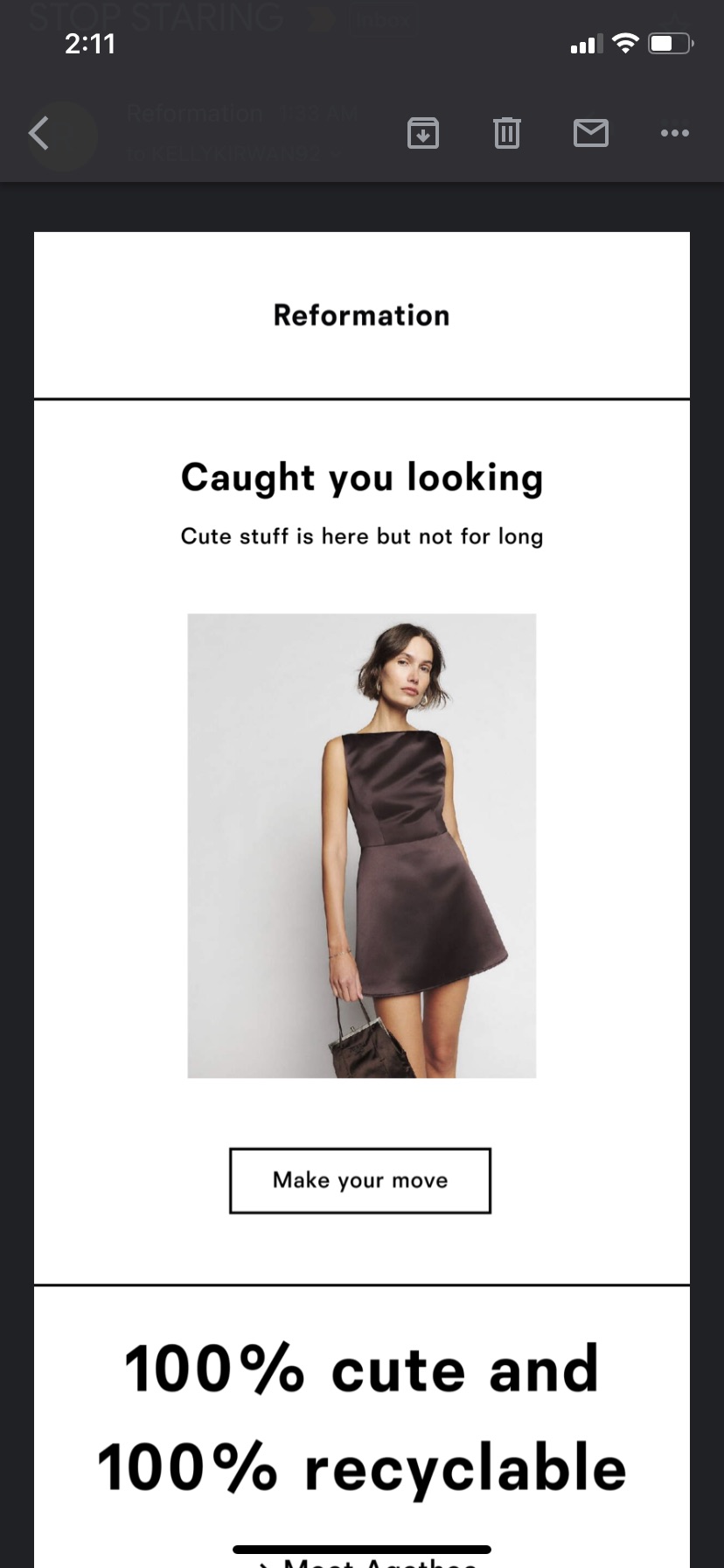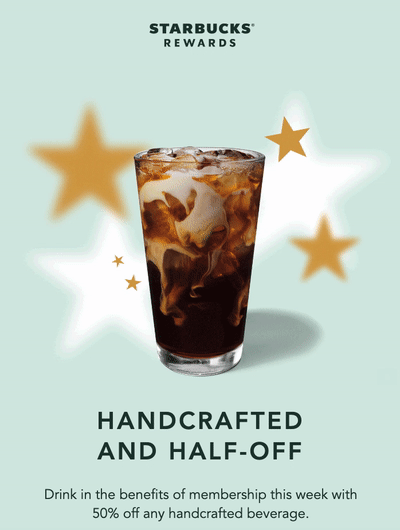Email Inbound Marketing Explained
An explanation of inbound email marketing and its best practices.
An explanation of inbound email marketing and its best practices.
With inbound email marketing, businesses target audiences who’ve already shown interest in their brand. In general, inbound marketing focuses on generating organic customers or leads, often employing tactics like content marketing, social media, SEO (and more) to have people discover them. With inbound marketing, businesses strategically create content or touchpoints to match customers’ funnel stage.
The main difference between outbound and inbound email marketing can be boiled down to customer awareness. With outbound email marketing, a business initiates a conversation with a potential customer who may not have expressed interest or ever interacted with the brand. In this scenario, businesses reach out to the customer (via email) to kickstart communication or directly deliver their marketing message. (Outbound email marketing is often compared to cold calling for this reason.)
Outbound email marketing can be risky, for both your brand reputation and legal reasons. Someone receiving an outbound email may feel like the message is irrelevant or spammy, and regulations like the CAN-SPAM Act clearly specify that customers must consent to receiving emails from a business.
For these reasons, there’s a few different opinions on whether email can truly be classified as outbound. Some believe that email marketing by its very nature is squarely in the inbound category (i.e., you only email customers who’ve opted in). Others say it’s a blend of both, and that outbound emails can still be compliant.
Email is a go-to marketing channel, providing businesses with the opportunity to communicate directly with their customers and strengthen their relationship.
Successful inbound email marketing shows an understanding of your customers, and how they’re interacting with your business across different touchpoints and channels. For this reason, the most effective campaigns have a 360-degree view of customer behavior and are able to personalize email content accordingly. We’ve written out a few best practices to follow below:
Only email users who have opted in. Unlike outbound email marketing, with an inbound strategy you’re building on an existing (or budding) customer relationship. As a best practice, only email people who have opted in to receive your email communications to avoid damaging your brand reputation (or worse, breaking the law).
Segment your audience, and tailor your messaging. Each email should have a relevant persona in mind as the target recipient. When crafting an inbound email campaign, be sure to answer the question of: who would find this relevant? You can create audience segments to help personalize emails based on a person’s job title, behavioral history, location, funnel stage, and so forth.
Experiment. Even with a knowledge of customer behavior, demographics, and preferences, experimentation provides crucial insight into the effectiveness of your email copy, call to action, and design. Running A/B tests on your subject lines to see how they impact open rates, or tweaking the positioning and sizing of your CTA button are two common examples of email experiments.
Leverage automation. Email marketing automation is an effective (and increasingly necessary) way of delivering fast, personalized experiences at scale. Based on customer behavior, you can automatically trigger cart abandonment emails or re-engagement campaigns to strengthen customer ties without bogging down your team with manual tasks.
It’s also important to consider factors like if your email is reaching recipients (i.e., is it being delivered to their inbox or bouncing back), and how that email is categorized once it lands (i.e., is it marked as spam?). Learn everything you need to know about email deliverability here.
The clothing retailer Reformation has a reputation for their conversational and interest-piquing copy. In the inbound email below, they highlight a product that a known customer has been browsing on their website. Not only is their writing tongue-and-cheek, it also incentivizes users with the warning that these products are selling fast.

Hulu, a streaming platform, offers a prime example of a re-engagement email for their current subscribers. Below, we see that Hulu curated a few suggestions based on that person’s previously watched shows. Clicking on one of these titles would take a viewer directly to that show’s page, making the entire experience seamless on top of being personalized.

This email from Starbucks checks a few boxes when it comes to best practices. We’ll start with its design. The use of animation is a great way to catch the eye and keep viewers engaged – and in this case, it also serves a specific purpose (highlighting all the drinks that a person can buy at a discounted price). The 50% offer is a fantastic incentive for current members to make a coffee run, while also encouraging people who haven’t signed up for a membership to do so, and start benefiting from these perks.

How do you know whether or not your inbound email marketing strategy is on the right track? In a word: data. Having a predefined set of metrics and KPIs is essential to understand what is working and what isn’t when it comes to your campaigns. We’ve listed a few metrics to consider:
Delivery rate: How many emails are reaching customers’ inboxes versus bouncing back?
Open rate: The percentage of recipients who actually opened your email.
Click-through rate: Recipients who clicked on one or more links in your email (i.e. how people are engaging with email content, this could also be a conversion metric).
Forwarding/sharing rate: How many people forwarded or shared your email ( a great metric to monitor potential referrals and brand awareness.)
Unsubscribe rate: Your unsubscribe rate shows how many email recipients opted out of future emails from your brand. This is especially worth tracking as it could be a sign of irrelevant email content, too many emails being sent, or an indicator of potential churn.
While you can track many of these metrics in an email marketing platform, it’s important to understand a customer’s entire journey with your brand. We recommend consolidating data from across teams to understand how a person moves between touchpoints – that is, creating a unified profile that updates in real time. This ensures that every inbound marketing effort is highly personalized without being repetitive or out of sync with customer behavior. (Customer engagement solutions like Twilio Engage can provide the data infrastructure and native email capability to pull off this holistic marketing effort.)
Connect with a Segment expert who can share more about what Segment can do for you.
We'll get back to you shortly. For now, you can create your workspace by clicking below.
An inbound email is when a business sends an email to a potential customer who has already expressed interest in their company (having discovered them through other inbound tactics such as social media, content marketing, SEO, and so forth).
A potential customer should always consent to receiving an email from your business. To get users to opt in, businesses often have a form on their landing pages, websites, etc. for people to fill out. Usually this form comes with some kind of incentive (e.g., a user inputs their email to receive a gated piece of content, sign up for a newsletter, or schedule a demo).
A company sending out a newsletter is an example of inbound marketing. In this scenario, a potential customer signs up to receive this content – and businesses can then tailor what’s included in the newsletter based on that person’s behavioral or demographic data, to ensure the content is relevant.
Twilio Engage is built on top of a customer data platform, allowing businesses to collect and consolidate customer data into unified, real-time profiles. This allows businesses to see a person’s entire behavioral history with their brand, and identify their preferences and interests. Also equipped with native email and SMS, a company can then use this data to create highly nuanced audience segments, and send out personalized email campaigns.